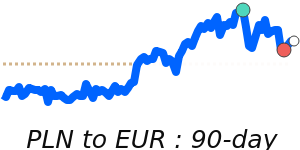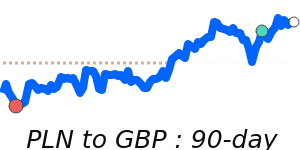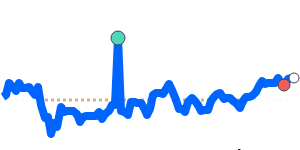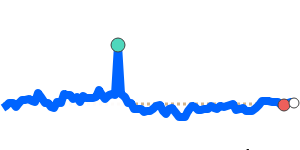The Polish zloty (PLN) is currently experiencing a period of stability and moderate appreciation against several major currencies. As of now, the PLN to USD is trading at 0.2794, which marks a 90-day high and is 1.7% above its three-month average of 0.2746. This currency pair has shown stability, fluctuating within a 3.7% range from 0.2694 to 0.2794 over recent months.
In the EUR market, the PLN to EUR exchange rate stands at 0.2373, just 0.6% above the three-month average of 0.2359, and similarly reflects a stable trading environment with movements in a narrow 1.7% range from 0.2339 to 0.2379. Conversely, the PLN to GBP is at a seven-day low of 0.2069, which is just slightly above its three-month average, indicating some recent weakening against the British pound. It has remained in a very stable 2.6% range from 0.2037 to 0.2089.
The zloty's strength can be attributed to several key developments. The National Bank of Poland (NBP) recently cut interest rates, initiating a cautious easing cycle, with further reductions likely depending on economic performance. With inflation dropping to 2.4% in November 2025—narrowly aligning with NBP's target—the economic outlook appears more favorable. Analysts at UBS foresee the EUR/PLN exchange rate stabilizing around 4.25 through mid-2026, reflecting a more optimistic sentiment towards the zloty amid improving economic conditions.
Moreover, the rising value of the zloty may present financial challenges for the NBP, which could incur significant losses due to the revaluation of its foreign reserves. Despite these potential downsides, the recent performance of the PLN demonstrates resilience influenced by monetary policy and external economic forecasts, positioning it well against major currencies.









